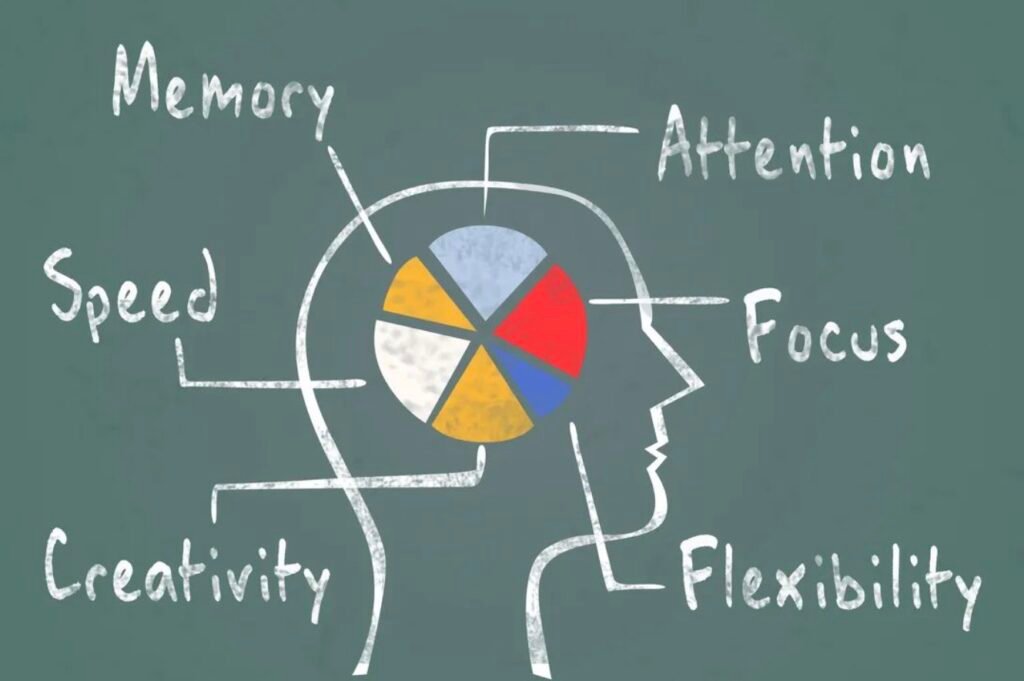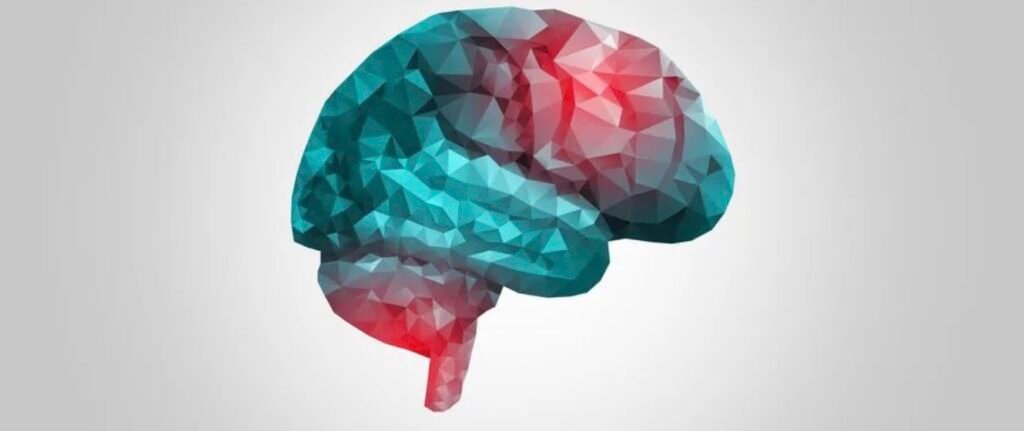Light, a substance that appeals to vision, changes in its brightness and color and can cause changes in our attention, which in turn affects the information processing mechanism in the brain. What is the mystery in this interactive game of light and attention? After reading this article full of dry goods, perhaps, you will have a more specific perception and clear understanding of lighting design.
Selective processing of visual attention
I recently read a book about the attention economy and it said that attention will be one of the biggest drivers of society in the future. Anything that grabs your attention may end up grabbing your time. or money.
The study of attention first came from cognitive psychology and neuroscience. The process of recognizing things in the mind is accompanied by the process of attention, which directs the mind to pay attention to some things and pay little or no attention to others.

Later, with the development of experimental research and neuroscience, the theory of attention can temporarily conclude that any design or thing that conforms to the cognitive model of the mind can grab attention, and create things that can grab attention. traffic and economic value. After being popularized by this knowledge, I also want to try to use this theory to understand and guide the work of lighting design.
Because the lighting design process is similar to the process of processing information by attention.
When we open our eyes, light carries a large amount of information into the eye and enters the retina to impact the human visual system. The visual attention cortex of the brain pre-processes the information selectively.
The choice of visual attention allows us to focus only on the information relevant to the current task, and our lighting design is also dedicated to highlighting key and effective information, which is a response of lighting design to the cognitive mechanism of the brain.
Reasons for lighting to process information
The huge amount of instantaneous information in the world has challenged the information processing capacity of our brain, and the cognitive ability of the human brain is limited by cognitive resources, that is, by the physical conditions of the brain.
Humans have no way to process all information, and all information needs to be filtered through attention and entered into consciousness. Light stimulates the attention of the visual cortex of the brain and triggers the screening of information, so we need to process the information in advance by controlling the light.

The purpose of this is to ensure that the information we want to convey successfully captures attention. Generally speaking, when people look at a picture, the process of visual attention is not only to first grasp the scene of a picture as a whole, make judgments concerning experience, and then pay more attention to certain local information, which is used as a basis for further verification own judgment.
In the whole process, attention is more focused on the local area. It is the visual cortex of the brain that controls attention and does not care too much about irrelevant information, which greatly improves cognitive efficiency and thus strengthens the extraction of object features, which is helpful for The brain forming long-term memory. This memory may further exist as a value “anchor”, which has an immeasurable impact on later behavior.
Given that when people observe images, they focus their attention on specific areas based on experience and judgment, and only the part of visual information that is noticed can enter consciousness. Therefore, our lighting design is to make good use of the processing mechanism of attention, to provide visual information that is easier to be recognized and accepted by the brain, and to improve the efficiency of visual information transmission.
The operation of attention
Our attention is like the beam cast by a searchlight on a tall lighthouse, and only what is illuminated by the beam can be noticed. Inside the beam is cognition, outside the beam is darkness.
Darkness is excluded from visual perception. This active blocking of unimportant information in a dark way prevents other irrelevant information from interfering with the important functions of the brain, much like the operation of attention.
Another particular phenomenon associated with attention, called the baton phenomenon, is to some extent another manifestation of the cognitive beacon model.

During the performance of a symphony concert, the conductor usually holds a baton to control the performance of the band. The background of the performance and the costumes of the musicians are usually dark. Under the illumination of the lights, this slender light-colored baton will be particularly conspicuous, which controls and guides the distribution of attention, allowing the musicians to play more attentively under the coordination of the conductor.
The baton on a dark background, which just fits the pattern of the brain’s attention processing information, is very helpful to the performance because its presence emphasizes the information conveyed by the conductor and suppresses irrelevant information.
This baton phenomenon leads to another characteristic of attention: According to cognitive science research, although the brain can process four or five things at the same time, the efficiency of information processing will decrease when it pays attention to each thing.
In addition to being able to emphasize some information and suppress some information, attention can also refine and compress information. We have far more information in real life than our brains can process, and luckily our brains are smart enough to not clumsily crunch through massive amounts of information bit by bit.

The brain will extract characteristic information and classify and archive it, which greatly improves the efficiency of processing information. However, there is a disadvantage to doing so. Personalized information that is not universal will be discarded, resulting in a lack of uniqueness.
In the field of art, the works of great artists across the barriers of time and space can always attract our attention. The development of modern brain science has confirmed that these works are in line with the attention and cognitive mechanisms of the brain. These are some of the relationships between our attention and artwork, creation, and design, which can guide us directly in lighting design.
Science is progressing continuously, and those with keen artistic intuition will always be at the forefront of the times, but we are lucky, the development of science allows us to make good works of art through learning.
Attention changes the delivery of information
Paying attention amplifies the signal, changing the ratio of information to noise.
An interesting phenomenon, the cocktail party effect, is when the noise in the environment at a cocktail party drowns out people talking, however, at this time, you can easily hear your friends talking. Because paying attention amplifies the signal, changing the ratio of information to noise.

We switch our attention between different sound sources, and selective listening is so easy to do that we often don’t notice this switching happening. However, if it is very difficult to achieve this effect with computers or artificial intelligence, it shows that the mechanism of this attention amplification is very complex and unique to humans.
Since the brain can mobilize our attention and change the proportional relationship between information and the environment, to achieve the effect of amplifying information, can we also use the techniques in lighting design to achieve this magnifying effect?
Another theory about the effect of attention changing the transmission of information is called feature integration theory, which explores how information is processed in the early stages of vision, first proposed by Treisman, Sykes & Gelade (Treisman, Sykes & Gelade).
Since different areas of our cerebral cortex are responsible for collecting different information, the color, shape, brightness, depth, volume, motion, etc. of objects are collected by different visual cells.

In the early stage of attention, this classified information will be transmitted to the brain after being collected, and then this scattered characteristic information will be further reintegrated to form a complete thing, which constitutes a complete cognition of things.
If we don’t have enough attention, we can’t integrate the correct information. Lighting design or other designs can also apply some comprehensive design techniques that are conducive to feature integration to achieve the effect of fully displaying things.
Types of Attention
The brain’s attention function is very powerful, so how to use its characteristics to help us design better? We need to understand two types of attention, one is exogenous attention and the other is endogenous attention.
Exogenous attention is caused by external stimuli. For example, if you are concentrating on listening to a class, suddenly there is a noise of decoration next to you, and your attention is attracted. Extrinsic attention is passive attention that occurs quickly and only lasts about 0.1-0.2 seconds.

Why is this so? Because the human brain has the function of return inhibition, once received exogenous stimulation, the nervous system will instinctively drive your attention to other goals, so relying on exogenous stimulation to attract attention alone cannot achieve Good results.
In addition to the return inhibition effect, the effects of exogenous attention are also affected by the characteristics of the exogenous attention itself, as well as the proportional relationship between the exogenous attention and the background.

Just as the brightness relationship between the object and the background is considered in lighting design, two objects with the same brightness are placed in an environment with a very different background, and the object in the dark background may appear brighter.
This contrast of brightness and the resulting illusion, from a physiological point of view, are related to the antagonism of ganglion cells, that is, the activity of ganglion cells will be inhibited in the light background, so the object does not look so bright.But against a dark background, to achieve visual balance, ganglion cells are activated and objects appear a little brighter. After understanding the principle behind this phenomenon, it may be possible to use this feature to make more interesting designs.
Summary
In general, exogenous attention occurs quickly and lasts for a short period, and it is often difficult to understand and leave complete memories and experiences, which is a characteristic of exogenous attention.
Endogenous attention occurs from the top down and is the attention that people schedule according to their own needs and goals. It comes slowly, lasts a long time, and processes a lot of information, so it is easy to form unforgettable memories and experiences. An advantage of endogenous attention.
If endogenous attention is triggered by the will of the individual, how does it help our design?
Screenwriters all know that human beings have a universal pursuit of universal values, and many fascinating and good stories can be told based on this endogenous attention. So endogenous attention, in addition to occurring spontaneously, can also be triggered by some means.
Exogenous attention can quickly grab people’s attention, and endogenous attention can make attention continue to output. Therefore, a successful design must be able to capture both the exogenous and endogenous attention of people.
From the Renaissance to Impressionism and Modernism, keen artists of all generations have explored the modes of attention and cognition through their artistic practice, created according to them, and finally achieved great achievements. With the development of science, these cognitive patterns have been revealed one by one, becoming knowledge that ordinary people can master through learning.
Lighting design or other designs should be designed by interpreting the cognitive model of the brain, to better capture attention and achieve efficient transmission of information because the improvement of information transmission efficiency is the driving force for social progress.


